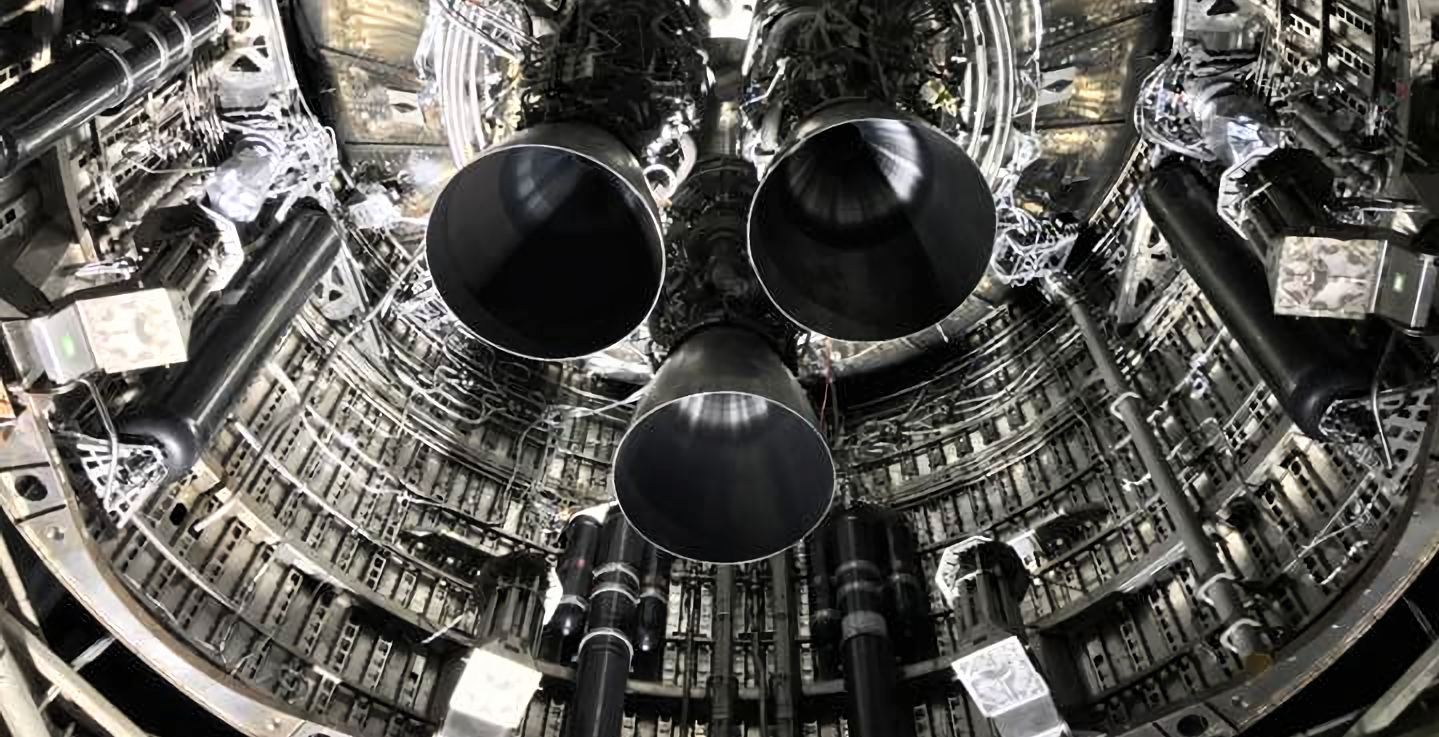Numerous Raptor engines are installed in Starship and Super Heavy by SpaceX.

Monday, July 4, 2022 | Chimniii Desk
A new Starship and its Super Heavy booster are being powered by 39 improved Raptor engines, according to fresh images released by SpaceX.
If both of the prototypes, known as Ship 24 and Booster 7, successfully complete impending test campaigns, they might be used to support Starship's initial orbital launch attempt later this year. Although it is still unclear whether that is a likely outcome, recent development indicates that it won't be long before both prototypes' futures become more apparent.
Advertisement
Advertisement
It was already a noteworthy accomplishment to construct, qualify, ship, and mount 33 new Raptor 2 engines on Super Heavy B7, which resulted in the most potent rocket booster ever put together. On July 2nd, SpaceX released a set of images that showcased the nearly finished engine section of Booster 7 and also indicated that all six Raptor engines for Starship S24 had been installed, along with some of the ship's aft thermal protection.
Ship 24 and Ship 20, the only other Starship prototype with six Raptors fitted, already differ from one another. Most likely intended to support flat sections of insulation and thermal protection that will partially seal off sensitive engine, plumbing, pressure vessel, and avionics components located inside Starship's aft, the most noticeable change is the addition of a metal framework that spans the width of the ship's aft. The additional shielding should lessen the harsh circumstances that the hardware must withstand during ground testing and possibly during flight.
Advertisement

Advertisement
Four cryogenic proofs (cryoproofs) and one Raptor thrust simulation test are among the several tests that Super Heavy Booster 7 has already successfully completed. Since its third visit to the launch pad, SpaceX has conducted a number of further confusing tests, none of which seemed to involve the loading of cryogenic propellant. Booster 7's pressurisation system may have received additional attention during those tests, which may have involved supplying the hot oxygen and methane gases that will later be utilised to pressurise the spacecraft's tanks with air. Before attempting to static fire any of its 33 Raptors, it's likely that SpaceX wants to put Booster 7 through at least one successful wet dress rehearsal using actual liquid methane and oxygen propellant. Before performing any static fire testing, workers will need to finish installing a few more panels because Booster 7's aft thermal protection system is also not totally finished.
Along with B7, Starship S24 has undergone extensive cryoproof and Raptor thrust simulation testing, which it passed through without experiencing any unfixable problems. On June 9th, the ship was brought back to an assembly bay, where workers have since installed heat shield tiles, finished the ship's engine section, and carried out numerous other less obvious closeout activities. One of SpaceX's two suborbital test and launch mounts was just finished being modified for Starship static fire testing, leaving the second mount to be semi-permanently changed for cryoproof and thrust simulation testing of future prototypes.
On July 5, 6, 7, 11, and 12, SpaceX has asked for permission to close roads for prospective 12-hour test windows.
Advertisement